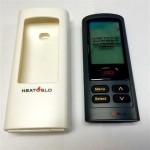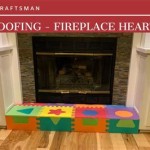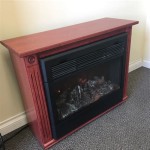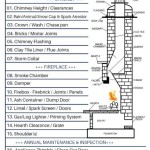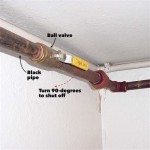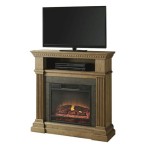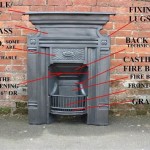Fireplace Fuel Cans: A Comprehensive Guide
Fireplace fuel cans are a popular and convenient alternative to traditional firewood for powering ventless or gel fireplaces. These cans contain a specially formulated fuel, typically a gel or liquid alcohol blend, designed to produce a clean-burning flame without the mess and hassle associated with wood. This article provides a detailed overview of fireplace fuel cans, covering their components, benefits, usage, safety considerations, and market options.
Understanding the Composition and Function of Fuel Cans
Fireplace fuel cans are self-contained units, typically constructed from metal, designed to hold and dispense a flammable fuel source. The fuel itself varies depending on the manufacturer and type of fireplace it is intended for. Generally, fuels are composed of various alcohols, such as isopropyl alcohol or denatured alcohol, thickened to a gel-like consistency (in the case of gel fuels) or left as a liquid with additives to control burn characteristics. These additives can include thickeners, colorants, and scenting agents.
The can itself serves several crucial functions. Firstly, it provides a safe and leak-proof container for the fuel during storage and transport. Secondly, it acts as a controlled combustion chamber, regulating the airflow and providing a consistent burn. Many fuel cans have a lid or adjustable vent that allows users to control the flame height and extinguish the flame when desired. The materials used in the can construction must be heat-resistant and non-reactive with the fuel to ensure safe operation over extended periods.
The burning process involves the vaporization of the alcohol fuel at the surface, followed by ignition and combustion of the vapor. The additives in the fuel contribute to the color, intensity, and duration of the flame. The absence of solid fuel components like wood minimizes smoke and ash production, making fuel cans a cleaner option for indoor use. The heat generated by the combustion process radiates outwards, providing warmth to the surrounding area.
Exploring the Advantages of Using Fuel Cans
Fuel cans offer several advantages over traditional wood-burning fireplaces, contributing to their growing popularity. These advantages include convenience, cleanliness, ease of use, and versatility.
One of the primary benefits is convenience. Fuel cans eliminate the need to chop, stack, and store firewood. The cans are readily available at many retail locations and can be easily stored in a closet or garage. Furthermore, there's no need to clean up ash or soot after each use. This ease of use makes fuel cans an attractive option for individuals who want the ambiance of a fireplace without the added effort of managing wood.
The cleanliness aspect is also a significant advantage. Because the fuel burns cleanly, it produces minimal smoke, soot, or ash. This reduces the risk of respiratory irritation and eliminates the need for frequent chimney cleaning. The clean-burning nature of the fuel also makes it suitable for indoor use in ventless fireplaces, as there is no need for a chimney or venting system.
Fuel cans are incredibly easy to use. Simply remove the lid or open the vent, ignite the fuel with a long lighter or match, and enjoy the flame. When finished, the flame can be extinguished by closing the vent or replacing the lid, starving the fuel of oxygen. This simple operation makes fuel cans accessible to individuals of all ages and abilities.
Finally, fuel cans offer versatility. They can be used in a variety of fireplace types, including ventless fireplaces, gel fireplaces, and even outdoor fire pits designed for can-based fuel. They are also portable, allowing users to move the fireplace from room to room or even take it outdoors for temporary use. This flexibility makes fuel cans a valuable heating and ambiance solution for a variety of situations.
Safety Guidelines for Handling and Using Fuel Cans
While fuel cans offer numerous advantages, safety must always be a top priority when handling and using them. Improper handling or use can lead to fire hazards, burns, or other injuries. Adhering to safety guidelines is crucial to prevent accidents and ensure safe operation.
Storage is a critical aspect of fuel can safety. Fuel cans should be stored in a cool, dry place away from direct sunlight, heat sources, and flammable materials. It is essential to keep them out of reach of children and pets. Avoid storing fuel cans in areas where they could be exposed to extreme temperatures, as this could cause them to leak or rupture. It’s advisable to store them in a well-ventilated area to prevent the buildup of flammable vapors.
When using fuel cans, it is essential to follow the manufacturer's instructions carefully. Ensure that the fireplace is placed on a stable, non-flammable surface away from curtains, furniture, and other combustible materials. Never leave a burning fireplace unattended. Supervise children and pets closely while the fireplace is in operation.
Refilling or tampering with fuel cans is strictly prohibited. The fuel is specifically formulated for safe burning in the can's designed environment. Introducing different fuels or altering the can's structure can result in unpredictable and dangerous combustion. Only use fuel cans that are specifically designed for the fireplace model being used.
When extinguishing the flame, follow the manufacturer's instructions. Typically, this involves closing the vent or replacing the lid to cut off the oxygen supply. Never use water or other liquids to extinguish the flame, as this can cause the fuel to splatter and spread the fire. Allow the can to cool completely before handling it or storing it away.
In the event of a spill, clean it up immediately with a non-flammable absorbent material. Avoid using water, as this can spread the fuel. Ensure the area is well-ventilated to dissipate any lingering vapors. Dispose of the absorbent material properly according to local regulations.
Navigating the Market: Types and Brands of Fuel Cans
The market for fireplace fuel cans offers a variety of options, with different types of fuels, can sizes, and brands to choose from. Understanding the different types and brands can help consumers make informed purchasing decisions.
The two main types of fireplace fuel are gel fuel and liquid fuel. Gel fuel is a viscous substance that burns with a bright, flickering flame. It is typically made from alcohol thickened with a gelling agent. Liquid fuel is a thinner consistency and may produce a slightly different flame appearance. Some liquid fuels are designed to be poured directly into a fireplace insert, while others are contained within a can. The choice between gel and liquid fuel often comes down to personal preference regarding flame aesthetics and burn time.
Fuel cans come in various sizes, ranging from small individual cans to larger, multi-use containers. The appropriate size depends on the size of the fireplace and the desired burn time. Smaller cans are suitable for shorter periods of use, while larger cans offer longer burn times but may also require a longer cooling-down period after use.
Several brands offer fireplace fuel cans, each with its own unique formulations and features. Some popular brands include Real Flame, SunJel, and TerraFlame. These brands often offer a range of fuel types, can sizes, and scent options to cater to different preferences. It is essential to research different brands and read reviews to determine which one best meets individual needs and expectations. Factors to consider include burn time, flame appearance, scent quality, and overall value.
Price is another important factor to consider. Fuel can prices vary depending on the type of fuel, can size, and brand. It is essential to compare prices from different retailers to find the best deal. Consider the cost per hour of burn time when comparing different options to determine which one offers the most value.
When purchasing fuel cans, it is important to ensure that they are compatible with the specific fireplace model being used. Refer to the fireplace manufacturer's instructions to determine the recommended fuel type and can size. Using incompatible fuels can result in poor performance or even safety hazards.

Ventless Gel Fuel For Fireplaces Real Flame

Real Flame Premium Gel Fuel 13 Oz Cans 24 Pack Com

Real Flame 24 Pack Gel Fuel 13 Oz Solid In The Department At Com

Real Flame Gel Fuel 24 Pack Fire Cans Indoor Outdoor Fireplace

Terraflame Pure Gel Fuel Cans Clean Burning Smoke Free Fire
Real Flame Gel Fuel 24 Pack Costco

Home Square 2 Piece Set With Two 24 Packs Of 13 Oz Gel Fuel Cans For Fireplace Com

Terraflame Pure Gel Fuel Cans Clean Burning Smoke Free Fire

Lloyd Modern Gel Fuel Fireplace Luxury Fire

Echoflame Gel Fuel Can 24 Pack Qvc Com
Related Posts

